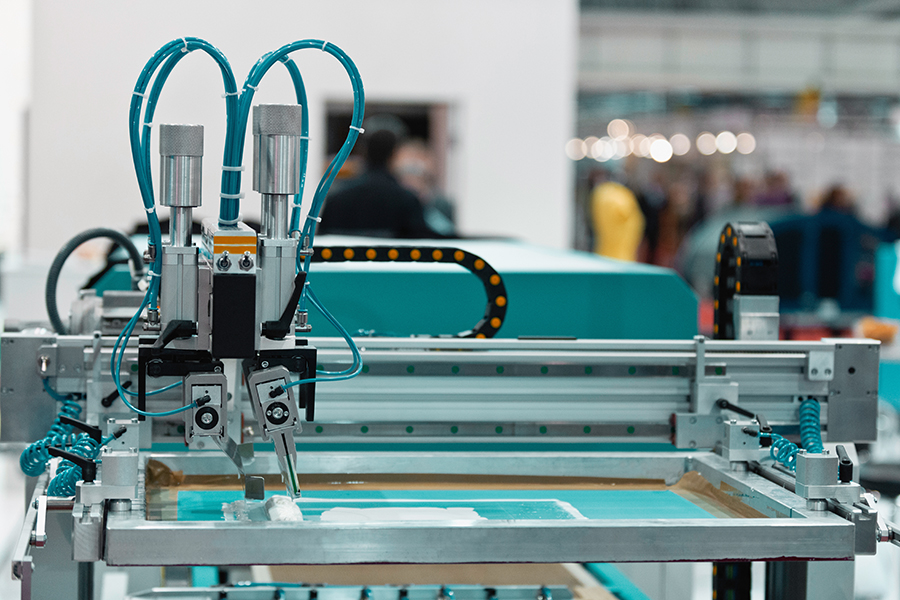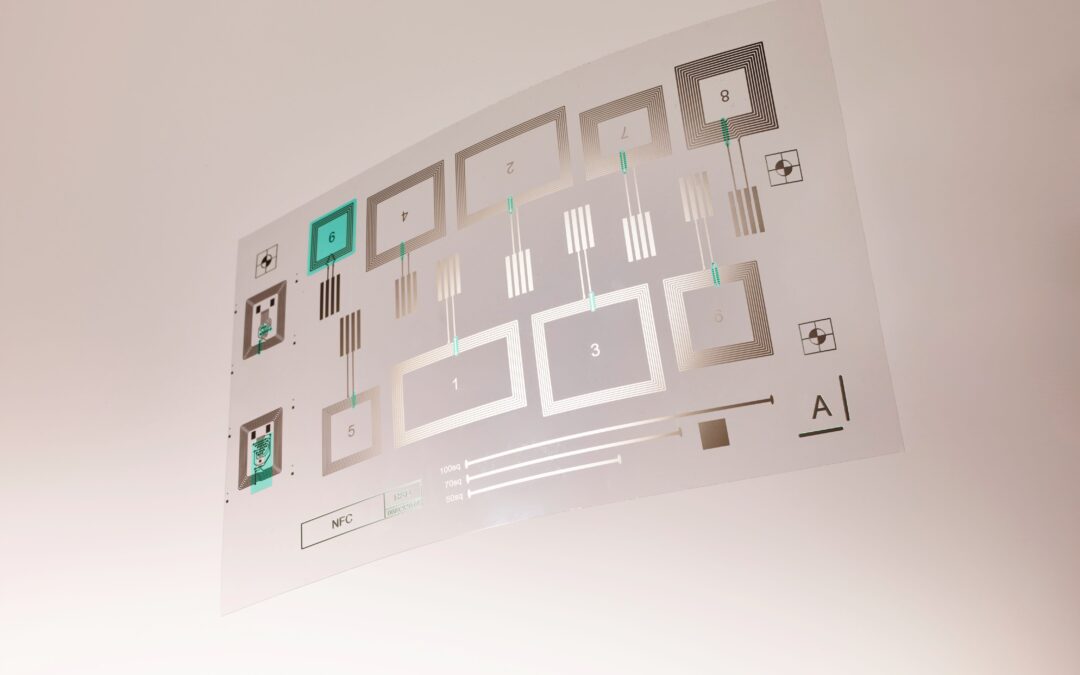Screen printing
Unlocking the secrets of screen printing for electronics
As the world of technology continues to evolve, screen-printing has become an essential part of producing electronic components. It is probably the most important technique in our production process. It may seem contradictory that an old-fashioned technique is used to create the most up-to-date technology, but screen printing offers many advantages. First, let’s take a look at how screen printing actually works.
“Experience the power of screen printing for electronics with Quad Industries, delivering cost-effective and precise solutions for intricate circuit designs.”
What is screen printing?
Screen printing is a form of printing that utilizes a screen, typically made from polyester mesh fit in an aluminum frame, to transfer ink onto the substrate. The screen acts as a stencil, allowing only certain areas of the screen to be filled with ink when it is pressed against the substrate. The thickness of the mesh and the size of the openings in the mesh determine the volume of ink you can push through it. Nowadays, a laser beam illuminates the screen to create the pattern in the mesh, determining where the ink can be pushed through. This technique is used in many different industries, including electronics manufacturing.
The advantage is that screen printing is an additive way of making electronics: you print ink on a blank substrate. In contrast to screen printing, there are other non-additive ways to create electronic circuitry, such as etching. Etching is a subtractive process that involves using acids or chemicals to remove unwanted material from the surface of a substrate. Examples of this type of manufacturing are found in printed circuit boards (PCBs) and semiconductor devices.
But unlike this technique, screen printing produces no waste. A blank substrate is used and only the ink that is needed is printed onto the substrate. Not insignificant in a world that demands more and more sustainability.

Substrates and techniques used in screen printing for electronics
Screen printing for electronics requires special substrates to ensure the best results. The standard substrates used in screen printing for electronics are polyester or PET (polyethylene terephthalate). Heat stabilization may be necessary to ensure that this substrate does not shrink during curing at high temperatures. The conductive inks that are used must be (typically) cured at around 120°C, so the different types of polyester and other materials that are used need to withstand this temperature. Other substrates commonly used in printed electronics are polycarbonate (PC) and TPU, which is mainly used for wearables and smart textiles. Additionally, screen printing may also be done on PMMA sheets, glass sheets or other materials, which are often used for housing the electronics.
In printing, several layers can be applied. By alternating functional layers with isolator, screen printing allows to build multilayer electronic circuits in a very straightforward way. This saves time and money, while eliminating the need for costly intermediate steps. Screen printing also enables designers to create intricate patterns on flexible, stretchable and large-area substrates. This makes screen printing an excellent choice for creating highly customized electronics with a high level of detail and precision and for a wide range of applications.
Overall, screen printing is an essential technique for producing electronics today due to its cost-effectiveness, accuracy and versatility. With its wide range of substrates available, screen printing has become a reliable method for creating intricate and complex electronics. It is important to have a clear understanding of screen printing for electronics to take advantage of its many benefits and produce the best results.
Why Quad Industries masters screen-printing for electronics
Quad Industries has been screen printing electronics since its origin in 1984. Starting with the production of membrane switches, which contained both a graphical screen printed front and screen-printed circuits, Quad Industries soon developed its expertise and expanded into more complex electronic circuit printing. Over the years, Quad Industries has continuously innovated to keep up with the demands of today’s electronic industry. With our knowledge and experience, we have become experts in screen printing, capable of producing intricate designs with precision and accuracy. Furthermore, we utilize a wide range of substrates to ensure that each product is printed with the best materials available. Finally, we also ensure quality by adhering to strict standards and regulations in order to guarantee customer satisfaction every time.
Testing and quality control at Quad Industries
The screen-printing process must adhere to stringent quality control standards to ensure that the end product meets specifications. Quality checks include measuring the thickness and adhesion of the printed layers, optically inspecting circuits under both bright and ultraviolet light as well as checking for opens and shorts in the printed tracks.
We add dedicated test structures on the film to monitor the quality of the screen-printed layers on a process level. By including these test structures on our production panels, we accurately and regularly check the consistency of the printing process, ensuring that only products with high quality standards are produced.
For many of our customers in automotive, medical and home appliance markets, we perform 100% end of line functional tests. But also on a process level, we constantly check a vast set of parameters to ensure optimal efficiency and high yield, to limit the cost of quality and mitigate the risk of non-quality reaching the end of line as much as possible.
So, don’t hesitate to contact us
Screen printing is a reliable and cost-effective method of creating electronic circuits and sensors with precision. Quad Industries has been screen printing electronics since 1984 and has developed the expertise to produce highly customized circuits with a high level of detail and accuracy. Furthermore, we use a wide range of substrates and adhere to stringent quality control standards to guarantee customer satisfaction every time. With our extensive knowledge and experience in printed electronics, Quad Industries is the most reliable partner you can trust when it comes to producing flexible electronic circuits.
By utilizing screen printing as an essential technique, customers are able to benefit from its cost-effectiveness, accuracy and versatility; allowing them to create complex designs and products with a high degree of quality. With Quad Industries’ screen-printing capabilities, you can be assured that your electronics will be produced to the highest standards and on-time. We look forward to working with you and providing the best screen printing for electronics solutions possible. Contact us today to discuss your project needs!
Get inspired

A quick reference guide to screen printing: how does it work exactly?
As we explained in an earlier blogpost, the most common used technique to create flexible electronic circuits is screen printing. In this blog, we will explain the crucial factors to implement screen printing the right way.What steps do we take? Screen printing...

Screen printing for electronics: an overview
Screen printing is one of the most popular and efficient methods for applying graphics and functional inks on a wide range of substrates. It’s used to create high-quality images as functional circuits as well. Let’s give you an overview of screen printing for...